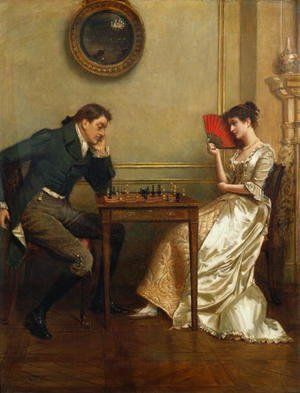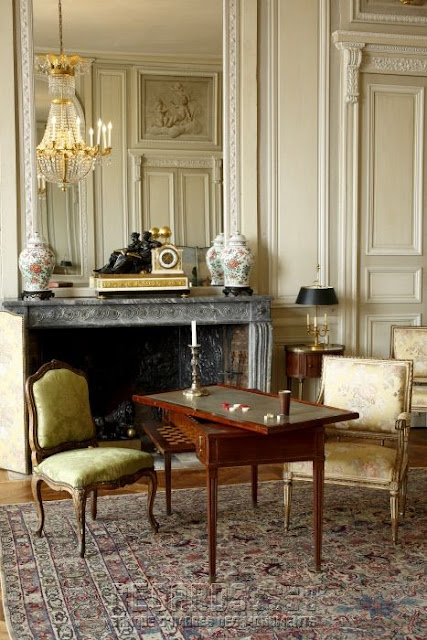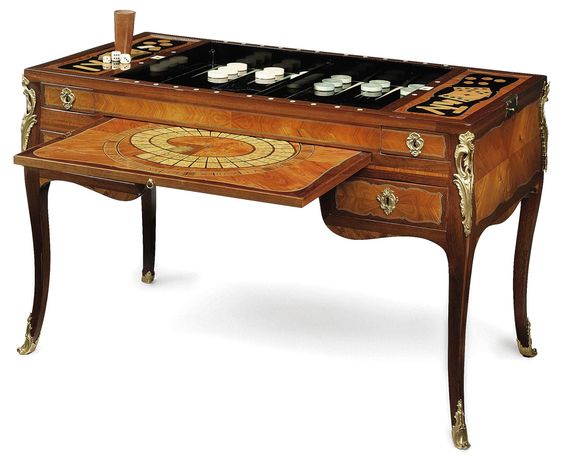Born in the second half of the eighteenth century, in the reign of King Gustav of Sweden, the pared back version of French neoclassicism has taken the decorating world by storm and shows no sign of letting up. Why is this? Because the combo of Swedish restraint and French decorative refinement gives us a style that is elegant, yet calm, making it very easy to live with.
This particular blog post puts the focus on one element of Gustavian decor.....the Swedish/Gustavian sofa. These pieces are simpler in style than their French cousins yet with fine carvings and moldings. The Swedish/Gustavian sofas were more in keeping with the Scandinavian tradition of painted furniture.
Since the Swedish/Gustavian furniture was more affordable than the ornate pieces being made in larger Swedish cities, a Gustavian sofa would have been a mainstay in many Swedish homes. Today the sofa has become the iconic piece of Gustavian decor. There might be many shapes and styles, but they are all easily recognizable and extremely coveted.
I hope you will enjoy the blog and the images I have gathered of these truly lovely sofas. Authentic Swedish/Gustavian sofas are very expensive but who knows, you might stumble upon one someday. The hunt can be as exciting as the treasure so don't give up. There are some wonderful reproduction Gustavian sofas out there too, so if this is your desired style you are in luck.
If you open any interior magazine you are certain to find a Swedish/Gustavian sofa highlighting a room.
We have King Gustav of Sweden, who came to the throne in 1772, to thank for the sofas and settees that bear his name.
He brought French style back to Sweden where the pared down versions of their lovely sofas and settees gradually grew into what is now the extremely popular Gustavian style. In fact, the 18th century is considered the "golden age" of Swedish furniture.
These lovely sofas, sometimes called peasant or country sofas, were usually painted in shades of white, cream, blue, soft yellow, green, and grays that run from dove to blue gray. Actually the very pale gray that everyone associates with Swedish/Gustavian style was never used during the 18th century. It is the result of marketing the shabby chic style.The surfaces are were sometimes even accented with gold or red.
The color chart indicates actual Swedish/Gustavian paint colors that were most likely originally used on these sofas and settees.
After white, blue is the color most often used on Swedish/Gustavian style sofas and other furniture.
einrichtungsstil.geschenkmeer.com
einrichtungsstil.geschenkmeer.com
An 18th century Swedish/Gustavian sofa from the Rococo period that has it's original chalky blue paint and traces of natural wood. Notice the intricately carved Rococo details on it's apron.
via Pinterest
I love the way a soft, cream painted Gustavian sofa looks almost sculptural when used with the right accessories.
People are tempted to repaint these antique whitewashed Swedish/Gustavian sofas and settees. Actually they are worth more in their original condition. Just clean them good and refrain from over finishing.
Unlike most Swedish furniture, Gustavian sofas have a cozy and warm feel that makes it easy for them to adapt to many different interior styles. The soft palette of chalky whites and other muted colors gives them an old world look while feeling modern and fresh.
This style of 18th century Swedish sofa is called Trågsoffa and is from the Rococo period. This one displays that elegant Gustavian style restraint and has the beautiful fluted and tapered legs that is indicative of these Swedish pieces.
This Swedish/Gustavian Trågsoffa has intricately carved flowing curves, cabriole legs, and carved shell motif on the apron, all from the French Rococo era.
I am seriously drooling!! Look at the exceptional detail on this 18th century Gustavian Trågsoffa.
instagram.com
It is rare to find a Swedish/Gustavian sofa wearing it's original paint. Most of pieces have been repainted multiple times throughout their lives.
This Gustavian sofa has original paint and spindled sides. It also has the fluted tapered legs common to these sofas.
ekomuseumbergslagen.wordpress.com
ekomuseumbergslagen.wordpress.com
Another wonderful Gustavian sofa with spindled back and sides.
via Pinterest
This Swedish dining room has some lovely pieces including two fabulous white painted Gustavian sofas. Another thing about the Gustavian style is that it works really well with gilded accessories. That touch of gold enhances the refined elegance of these pieces so the sofa looks right at home with this chandelier, candelabras, and and gilded mirrors.
Look at how beautiful this dark gray painted Gustavian sofa looks with the crystal chandelier. Mirrors, crystal wall sconces, and chandeliers seen to enhance the simple beauty of these pieces.
toneontoneantiques.blogspot.com
This wonderful Swedish/Gustavian sofa has a patina that only comes with age.
via Pinterest
A Gustavian sofa with that worn, whitewashed finish that people find so attractive.
This fabulous Swedish/Gustavian sofa has graceful guilloche carving along the apron. Guilloche carving is an interlacing pattern of bands or ribbons that weave around a center button. Swedish furniture makers were fond of this French pattern.
I think one of the reasons the Gustavian sofa is extremely popular today is how easy it is to incorporate it into any decor style. Whether the interior is Old World, country, farmhouse, French, Swedish, traditional or even ultra modern, these sofas work well.
A blue painted Swedish sofa from the Gustavian Period, circa 1790, with carved sheaf of grain finials which is an emblem of the royal house of Vasa. Vasa was a royal house founded in 1523 in Sweden which ruled from 1523–1654.
via Pinterest
I love the rustic yet refined and formal look of this Gustavian sofa. Again notice the grain finials.
A wonderful example of green paint on a Gustavian sofa. This one has finials in the shape of urns.
These Swedish sofas are highly desirable and there are so many great images of them that this post could go on forever. However, I think this Gustavian sofa with blue and ivory striped upholstery, proudly displayed in the entrance of this home, is a perfect one to end with.
If you are going for the Swedish/Gustavian interior remember the trademark elements associated this style. The color scheme is soft and almost romantic with charming spaces full of light and elegance. Look for painted Mora clocks, the tiled stoves called kakelugn or even cocklestoves, lovely painted and distressed furniture that is simple yet refined. Linen, checks, and stripes are the go to choice for upholstery. Overall this style has a folk art elegance that is fresh and historic all at the same time. Oh, one more thing you must have.......that fabulous Swedish/Gustavian sofa!!
Click here to see the previous post
This blog post was published by Lisa Farmer





































































